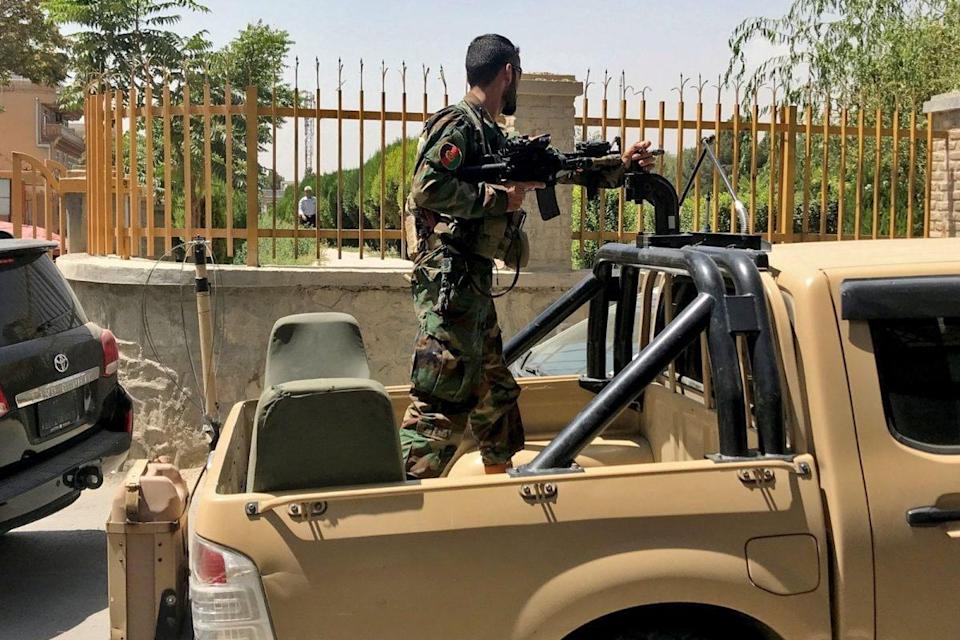More numerous and better equipped than the Taliban on paper, the Afghan national army is seen as suffering from grave systemic issues that have hollowed out its fighting capabilities, reports have said.
What Is The Strength Of The Afghan Army, And The Taliban?
The latest Quarterly Report of the US Special Inspector General for Afghanistan Reconstruction (SIGAR) dated July 30 says that there are more than 300,000 personnel who make up the Afghan National Security and Defence Forces (ANDSF), which includes the entire gamut of all armed and law and order staff on the Kabul government’s payroll.
However, the US Combating Terrorism Centre at West Point, a military training academy, said in January this year that a 2014 study had found that while combat forces made up around 60 per cent of the Afghan forces, “the number of soldiers showing up for duty each day is even lower”. It said that the Afghan army can count on an “estimated on-hand army fighting force of about 96,000 soldiers” and, including police forces, “the ANDSF are likely fielding a fighting force in the vicinity of 180,000 combat personnel each day”.
But SIGAR highlighted another problem: “ghost soldiers”. Pointing to the “corrosive effects of corruption within the ANDSF”, it cited the “existence of ghost soldiers and police”, which are nothing but “fake personnel records that corrupt actors used to pocket salaries”. Though it said that biometric systems have been introduced to weed out the non-existent soldiers, what it means is that there may be a big mismatch between the muster roll of soldiers and actual boots on the ground.
The Taliban, on the other hand, may have an estimated “60,000 core fighters, give or take 10-20 per cent”, the West Point report said, adding that a 2017 study had, however, “concluded that the group’s total manpower exceeds 200,000 individuals, which includes… another 90,000 members of local militias, and tens of thousands of facilitators and support elements”.
How Do The Two Sides Match Up In Firepower?
The Taliban are seen as being a “less technically sophisticated fighting force than the Afghan government — lacking an air force, heavy artillery, a fleet of armoured vehicles”. But its strength may lie in the fact that it is a leaner force than the ANDSF, which has relied majorly on foreign funding for military infrastructure and hardware.
Increasingly, bits of US military equipment are falling into Taliban hands. The SIGAR report says that where Afghan soldiers have fled Taliban attacks, they have often abandoned “their US-supplied equipment, which the Taliban then displayed on social media as propaganda to tout its victories”, including, recently, a US army a knocked out US army helicopter.
Where Do The Two Sides Stand Now?
The announcement of the US troop draw-down was met with the launch of an unrelenting Taliban offensive that saw the militants overrun “numerous ANDSF checkpoints, bases, and district centres”. The SIGAR report quoted top US military generals as saying that “the loss of terrain and the rapidity of that loss of terrain has to be concerning”. But it quoted General Mark Milley, chairman of the US Joint Chiefs of Staff, as saying on July 21 that while the “strategic momentum appears to be sort of with the Taliban… I don’t think the end game is yet written”.
However, the situation on the ground may not bear out the general’s optimism. Herat and Kandahar, two of the biggest cities in Afghanistan, are among the 10 or so major urban centres that have already fallen to the Taliban and the group is now reported to control more than half of the 34 Afghan provinces.
Reports suggest that Kabul is now within the Taliban’s sights and the Afghan government’s collapse could come in a matter of months, although the SIGAR report quoted a US general as having said in end-June that “a civil war path is visualisable”. The strategy of the Afghan national forces is to reportedly hold on to the cities and provincial capitals as the two sides engage in talks to find a peaceful solution. But at the rate at which the Taliban is notching up successes on the battlefield, there is doubt whether the government of President Ashraf Ghani will be able to hold on to any bargaining chips.
How Did Taliban Seize The Momentum?
Along with the “questionable accuracy of data on the actual strength of the force”, the SIGAR report also expresses concern over the lack of any means to gauge “the influence on combat readiness of intangible factors such as the will to fight”. Morale has been one key element where the Taliban is seen as being able to score decisively over the Afghan forces, especially as they go from strength to strength in overrunning the country.
While Afghan forces were seen as offering resistance in some districts, the SIGAR report said that “in others they surrendered or fled in disorder”, noting how in some cases, “local elders reportedly mediated truces that allowed the ANDSF defenders to leave”. The West Point report points to the Taliban’s “ability to recruit and deploy new fighters in recent years” which also underlines its “ability to withstand significant casualties — estimated to be in the range of thousands per year”.
For all the talk of theirs being a better funded and equipped fighting force, reports suggest that the Afghan forces actually may be suffering from a lack of cohesion and organisational support. A New York Times report said that Afghan forces have complained of an absence of logistical backing and even of food as they face an increasingly crippling onslaught from the Taliban.
The SIGAR report notes that the US has spent more than $88 billion to “support Afghanistan’s security sector” though it cast a doubt on the outcome of such funding, saying that “the question of whether that money was well spent will ultimately be answered by the outcome of the fighting on the ground”.


























































































